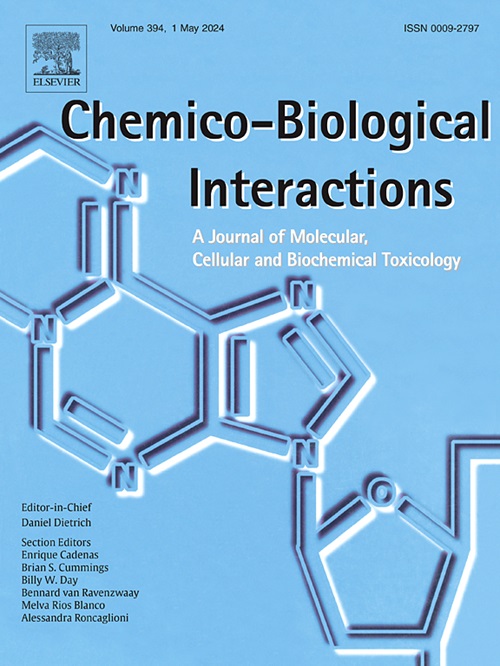Assessment of CYP2D6 gene expression in liver tissue: Variability in CYP2D6 mRNA levels within genotype-predicted metabolizer phenotype groups
IF 4.7
2区 医学
Q1 BIOCHEMISTRY & MOLECULAR BIOLOGY
引用次数: 0
Abstract
Pharmacogenetic (PGx) testing can be used to help guide drug therapy and decrease or avoid the risk of adverse drug reactions. CYP2D6 is an important pharmacogene in pharmacogenomics testing panels. However, phenoconversion, whereby an individual's ability to metabolize a drug does not match the genotype-predicted metabolizer status, is a confounding factor to the accurate application of PGx testing results to patient care. To address this issue, CYP2D6 expression between and within genotype-predicted CYP2D6 metabolizer phenotype groups was compared using WGS and RNA-Seq data from 134 normal liver tissue donors obtained from the GTEx program. Wide variability in CYP2D6 mRNA levels was observed within metabolizer phenotype groups. The median expression level for ultrarapid metabolizers (UMs) was 738.9 TPM (transcripts per million; 196.8–778.9 TPM), 212.5 TPM (32.1–666.5 TPM) for normal metabolizers (NMs), 219.6 TPM for intermediate metabolizers (IMs) (22–389.8 TPM), and 121.2 TPM for poor metabolizers (PMs) (9.3–298.2 TPM). The PM and UM phenotypes were significant predictors of CYP2D6 expression (p = 0.0004 and p = 0.019, respectively). Interestingly, expression of the gene encoding human serum albumin (ALB) was also a significant predictor of CYP2D6 expression (p = 0.0003). Data from 50 patients with hepatocellular carcinoma obtained from the TCGA program showed no significant difference in expression between tumor tissue (median = 119.7 TPM, range 0.16–817.7 TPM) and normal matched tissue (median = 143.3 TPM, range 26.2–810.7 TPM). Transcriptional regulation of CYP2D6 expression may contribute to differences in drug response and risk for CYP2D6 phenoconversion. Efforts to understand the role of gene expression to predict CYP2D6 phenoconversion may inform the use of PGx testing in the clinical setting.
肝组织中CYP2D6基因表达的评估:基因型预测代谢表型组中CYP2D6 mRNA水平的变异性
药物遗传学(PGx)测试可用于帮助指导药物治疗,减少或避免药物不良反应的风险。CYP2D6是药物基因组学检测面板中重要的药物基因。然而,表型转化,即个体代谢药物的能力与基因型预测的代谢状态不匹配,是PGx检测结果准确应用于患者护理的一个混淆因素。为了解决这一问题,使用从GTEx项目中获得的134个正常肝组织供体的WGS和RNA-Seq数据,比较了基因型预测的CYP2D6代谢物表型组之间和内部的CYP2D6表达。在代谢表型组中观察到CYP2D6 mRNA水平的广泛差异。超快速代谢物(UMs)的中位表达水平为738.9 TPM(转录本/百万;正常代谢物(NMs)的TPM为196.8-778.9 TPM),中间代谢物(IMs)的TPM为219.6 TPM (22-389.8 TPM),差代谢物(pm)的TPM为121.2 TPM (9.3-298.2 TPM)。PM和UM表型是CYP2D6表达的显著预测因子(p = 0.0004和p = 0.019)。有趣的是,编码人血清白蛋白(ALB)的基因表达也是CYP2D6表达的重要预测因子(p = 0.0003)。从TCGA项目中获得的50例肝癌患者的数据显示,肿瘤组织(中位数= 119.7 TPM,范围0.16-817.7 TPM)与正常匹配组织(中位数= 143.3 TPM,范围26.2-810.7 TPM)之间的表达无显著差异。CYP2D6表达的转录调控可能导致药物反应的差异和CYP2D6表型转化的风险。努力了解基因表达在预测CYP2D6表型转化中的作用,可能会在临床环境中使用PGx检测。
本文章由计算机程序翻译,如有差异,请以英文原文为准。
求助全文
约1分钟内获得全文
求助全文
来源期刊
CiteScore
7.70
自引率
3.90%
发文量
410
审稿时长
36 days
期刊介绍:
Chemico-Biological Interactions publishes research reports and review articles that examine the molecular, cellular, and/or biochemical basis of toxicologically relevant outcomes. Special emphasis is placed on toxicological mechanisms associated with interactions between chemicals and biological systems. Outcomes may include all traditional endpoints caused by synthetic or naturally occurring chemicals, both in vivo and in vitro. Endpoints of interest include, but are not limited to carcinogenesis, mutagenesis, respiratory toxicology, neurotoxicology, reproductive and developmental toxicology, and immunotoxicology.

 求助内容:
求助内容: 应助结果提醒方式:
应助结果提醒方式:


